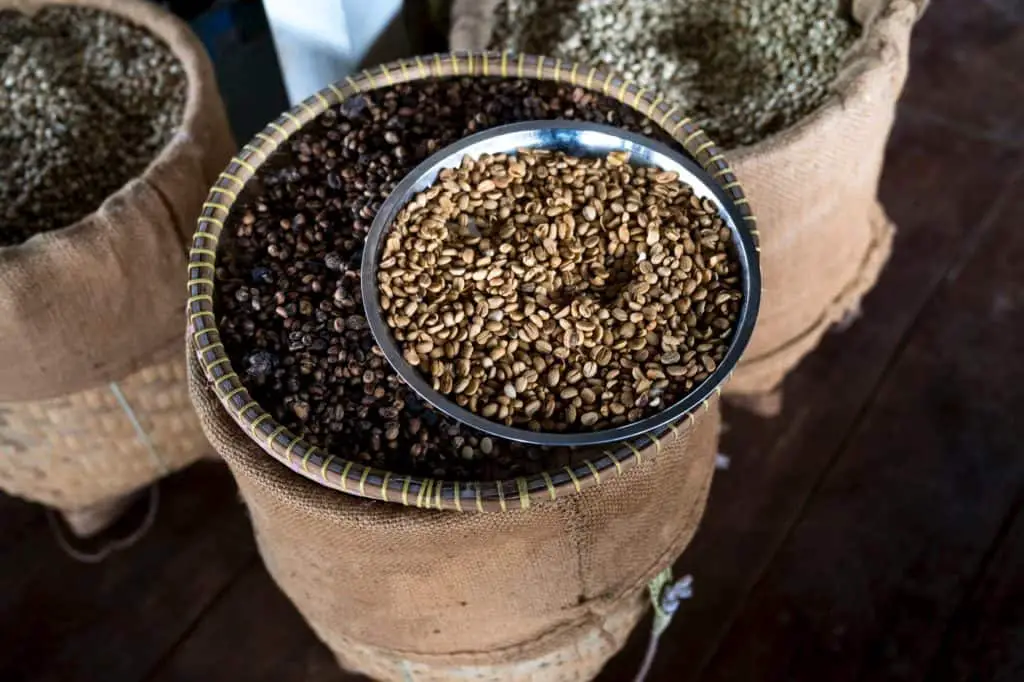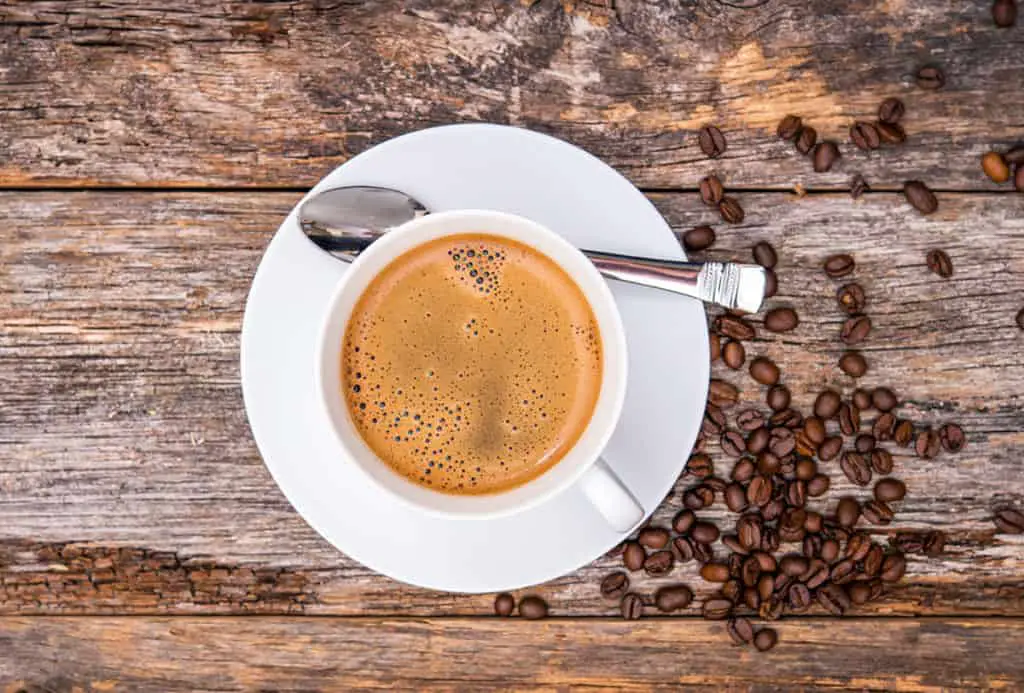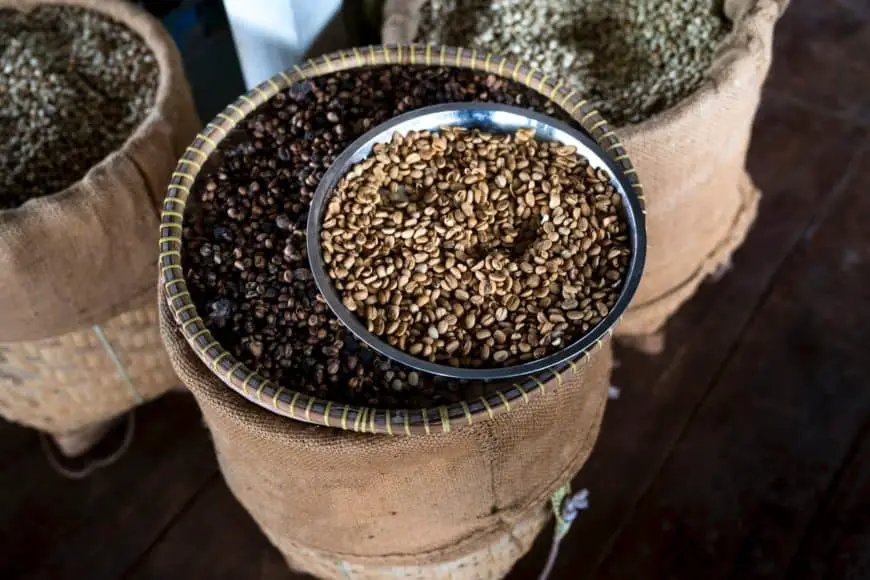
Out of all the known varieties of coffee beans, one stands out as some of the rarest and the most sought after by many coffee gourmands. We’re talking about Liberica coffee beans which have their own unique flavor profile, aroma, and history.
Liberica has become quite an enigma thanks to its rarity. Today, however, we’ll be dissecting this very rare coffee bean by taking a look at its origins, its flavor profile, and what makes it so different from the rest.
What is Liberica Coffee?
Liberica coffee is a type of coffee that originated in Liberia, a country on the coast of West Africa. Liberica coffee plants are much larger then either Arabica or Robusta plants and the large coffee beans are known for their intense wood and smoky flavor.
It is a species of coffee plant that grows in specific climates. Much like other coffee plants, it actually originated from Africa. In fact, it is named after Liberia, where the plant was a native from.
Through the years, it has long since been naturalized and cultivated in different parts of the world, mostly in Southeast Asia. The plant that produces the beans themselves can grow taller than other coffee plants, as much as 20 meters in height, and produces larger than normal fruits.
Liberica beans are also known for their rarity. In fact, these coffee beans account for only 2% of world’s overall coffee consumption. One reason for its rarity is the overall difficulty of harvesting and processing these coffee beans.
So much so that people have begun planting hybridized Liberica plants that are less robust in flavor but are much easier to harvest. Pure Liberica plants are actually becoming in danger of going extinct because of this.
Because of its limited supply, Liberica beans tend to come with a very heavy price tag, but the flavor is usually worth it.
How is Liberica Coffee Different then Arabica and Robusta?
As you may have already known, there are numerous other types of coffee beans out there. This includes the two of the world’s most produced coffee in the world, the Arabica, which accounts for 75% of the world’s coffee consumption, and Robusta coffee, which accounts for 20%. Aside from its heftier price tag and rarity, there are plenty of ways you can distinguish the Liberica variant from its more common cousins.
Compared to the Arabica and the Robusta, Liberica coffee beans tend to be much larger. The shape of the beans themselves also tend to be asymmetrical, which makes it very unique to other coffee beans.
Compared to Liberica, Arabica and Robusta also have much higher caffeine levels, making them more effective at keeping you awake than Liberica coffee. Liberica also has a much stronger aroma and flavor profile.
What Does Liberica Coffee Taste Like?

Although Liberica has a lower caffeine content than Arabica and Robusta, it does make up for it through its strong flavor and aroma. It offers a much different experience than what the two major coffee types offer, mainly having aroma described as nutty and smoky, with hints of dark chocolate when it’s in the process of brewing.
It has a strong flavor, which emphasizes bolder, earthier tastes, which gives a cup a much heavier kick to it. Some would even describe it as liquid tobacco, due to the strong smoky taste and smell it produces being similar to the actual tobacco plant. People in the Philippines, where it is cultivated most, even call the coffee “Kape Barako”, which loosely translates to “Manly Coffee”.
Liberica’s flavor is actually comes more from its aftertaste than its actual upfront flavor. It’s less bitter than Arabica or Robusta, but the aftertaste is much stronger.
If someone finds Arabica or Robusta too bitter, then Liberica is a good alternative. Needless to say, Liberica flavor is an acquired taste, and although it’s not for everyone, the people who do find it appealing tend to get hooked rather well.
Where is Liberica Coffee Grown?
The history of Liberica cultivation is as complex as its flavor profile. As we’ve mentioned before, the coffee plant originated in Liberia, in the western coast of Africa. Up until the 1880’s, Arabica was the most popular coffee bean to cultivate, much like today.
However, a global outbreak of coffee rust, a fungal infection that affects coffee plants, threatened to collapse the coffee industry by wiping out much of the world’s coffee plant cultivates. It was so bad that at one point, the Arabica plant was in danger of becoming extinct.
The Liberica plant was introduced as an alternative to the Arabica. The plant was first cultivated in the provinces of Batangas and Cavite in Philippines, which was then an American colony.
The Liberica enjoyed worldwide success until the Philippines gained its independence after World War II. After losing their main coffee producer, the United States placed huge restrictions on the Liberica coffee beans in order to limit their competition on coffee production.
This made it difficult for Filipino cultivators to compete on a global scale. The restrictions were eventually lifted by the 1950’s, but by then, the Arabica retook its crown as the most popular coffee variant.
Today, the Philippines remains the largest Liberica producer in the world, though Malaysia and Indonesia also produce a large quantity of this variant. The Southeast Asian climate within these countries are what helps Liberica thrive.
How Much Caffeine is in Liberica Coffee?
As we’ve mentioned before, Liberica has the lowest caffeine content out of all other coffee beans. Robusta has the highest, with 2.26 g of caffeine for every 100 g of beans. Arabica is a far second with only 1.61 g of caffeine for every 100 g of beans. Liberica only has 1.23 g caffeine for every 100 g of beans.
Is Liberica Slowly Going Extinct?
Liberica is still being cultivated, so it’s not in any danger of disappearing any time soon, even if the cultivation isn’t as common as it used to be. However, for the wild variants, it’s a totally different story.
Wild coffee plants are slowly disappearing due to climate change and deforestation, and this also includes the more popular species of coffee, including Arabica and Robusta.
What makes Liberica in an even bigger danger of disappearing completely is that its cultivated version is being hybridized. This hybridization is producing a subspecies of Liberica that grows much shorter, hence easier to harvest.
The flavor profile of these hybrid coffee beans are also much different, becoming less robust. Many cultivators are starting to switch to this hybrid Liberica rather than the purebred one, which makes purebred Liberica cultivation even more rare.
The recent resurgence of coffee rust has also taken a huge toll on the cultivated Liberica coffee. This means that Liberica, both in the wilds and in farms, are slowly dying out. Efforts from the Philippine government have made progress at slowing down this disappearance, however, so hopefully, Liberica coffee can still be enjoyed by future generations.

